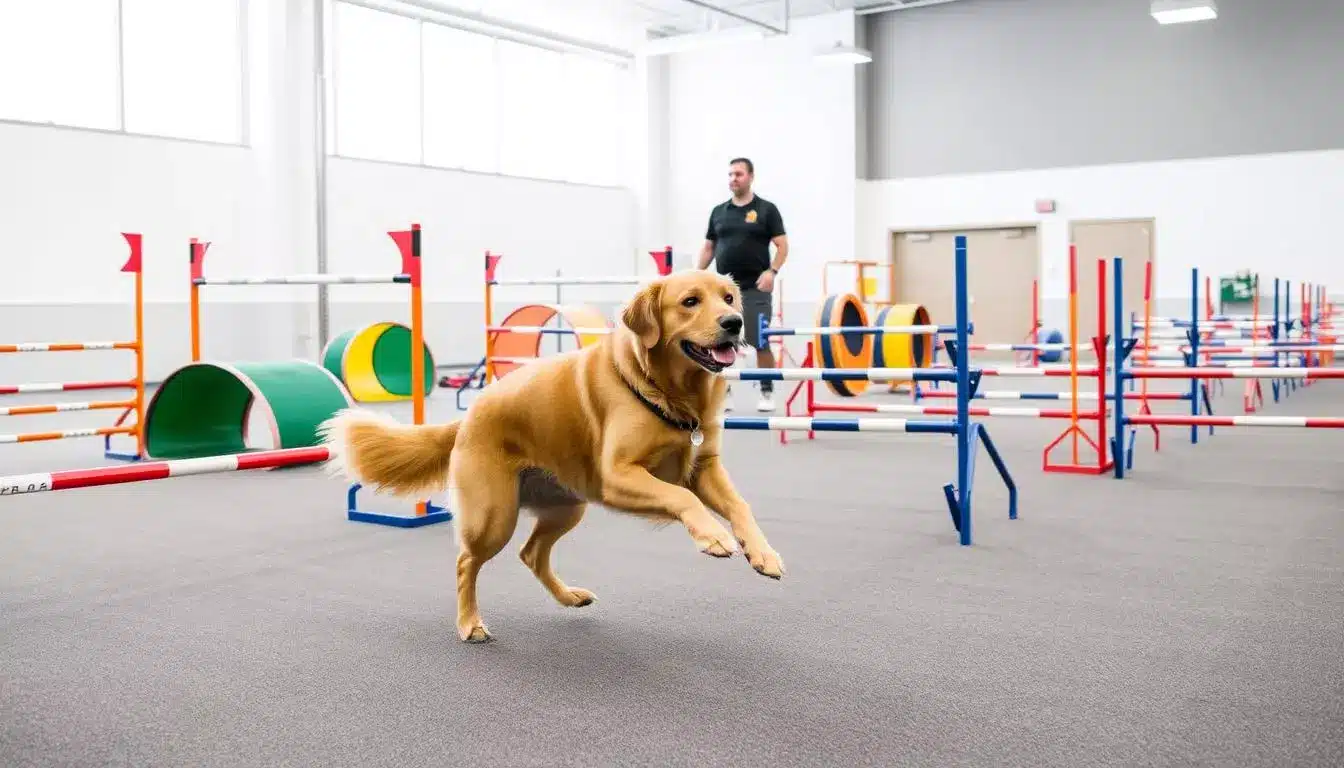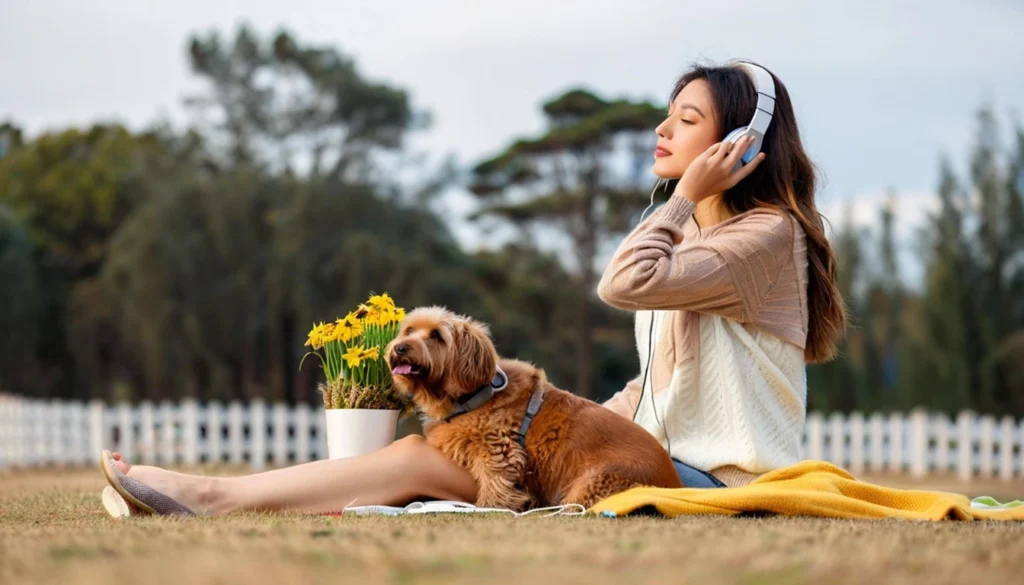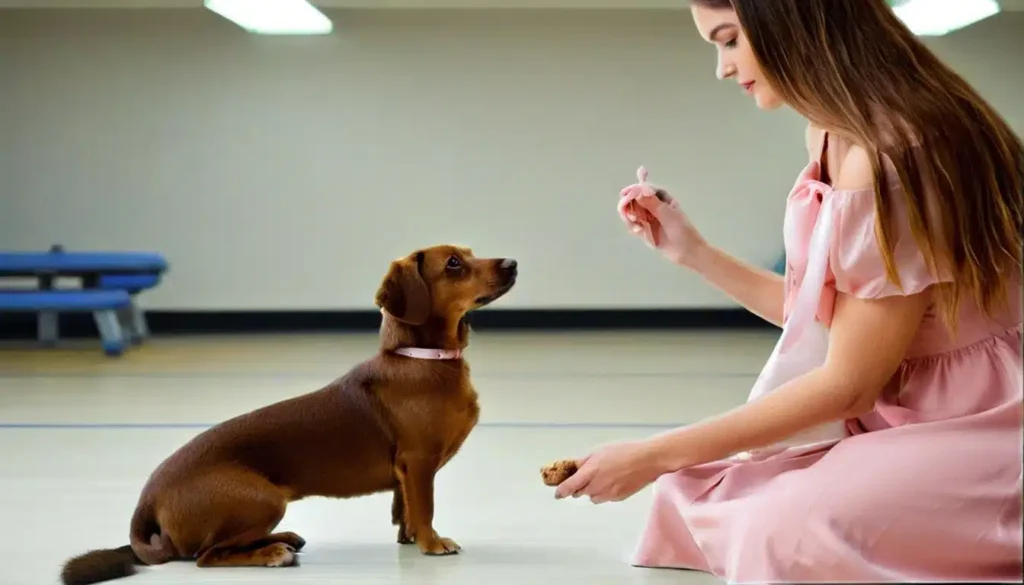Watching my dog, Max, jump over obstacles during agility training was amazing. It's more than just exercise; it's about understanding each other and having fun. Dog agility training has changed our bond, letting us communicate in new ways. I want to share this journey with you.
Whether you're new to dog ownership or experienced, an agility training guide can open up a new world. It boosts physical fitness and mental stimulation. Let's explore dog training for agility together and enjoy the journey.
Key Takeaways
- Dog agility training enhances the bond between you and your dog.
- Agility training improves your dog's physical and mental fitness.
- Understanding the basics is essential for successful training.
- Starting early will set the foundation for agility success.
- Finding the right training environment is crucial.
Introduction to Dog Agility Training
Dog agility training is a fun way to bond with my dog and improve their skills. It introduces dynamic courses that boost their physical and mental health. Dogs get to run through jumps, tunnels, and weave poles, exercising and sharpening their focus.
Agility training is all about teamwork and communication between me and my dog. Overcoming obstacles together brings a sense of achievement. This motivates us to keep practicing. Seeing my dog become more confident and agile shows me why agility training is worth it.
Understanding the Basics of Agility Training
Agility training boosts a dog's physical skills and strengthens the bond between dog and handler. It started in the UK during horse shows, becoming a global sport. Knowing its history helps us grasp the basics of dog agility.
History and Evolution of Agility Training
Agility training began as a fun part of horse shows, where dogs showed off their obstacle skills. It grew in popularity, becoming a formal sport in the late 1970s in the UK. Now, dogs of all breeds compete worldwide, showing their speed and accuracy.
Importance of Basic Obedience in Agility
Success in agility training depends on obedience. Dogs need to know basic commands like “sit,” “stay,” and “come.” These commands are key, helping dogs follow their handlers in the excitement of competition. Good obedience skills make training more effective and strengthen the dog-handler bond.
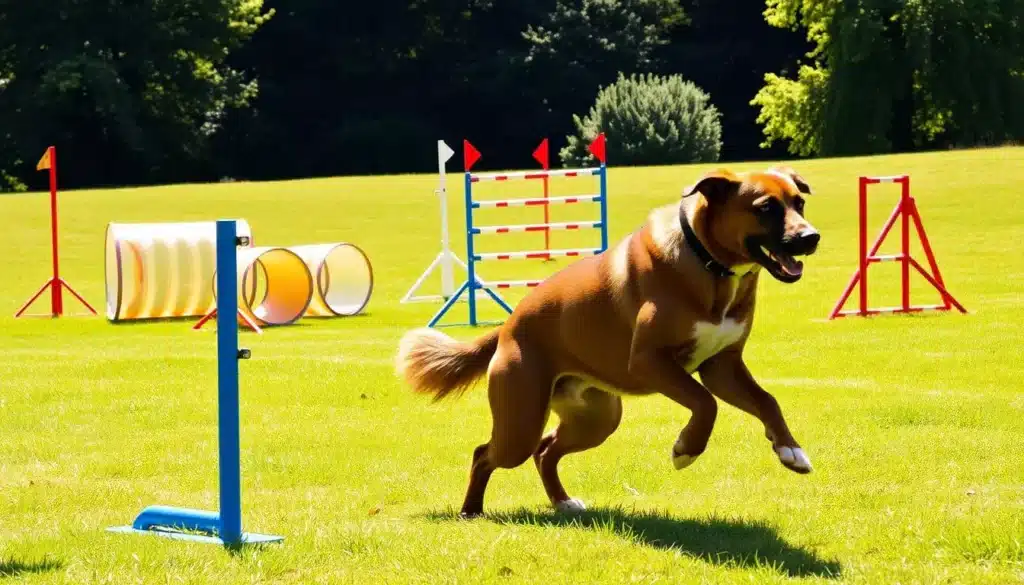
- History of agility training showcases its transformation from a casual activity to a competitive sport.
- Basic obedience commands are crucial for agility training success.
- Building a strong bond through training fosters better performance in competitions.
When to Start Dog Agility Training
Figuring out when to start dog agility training is key for my dog's health and learning. Experts say to start when my dog is 12 to 18 months old. This lets their body grow strong, avoiding harm to their joints.
Before that, I focus on basic obedience and skills. These basics help my dog get ready for agility training. Good obedience means better communication and understanding between us.
Starting agility training early can make my dog excited for it later. Fun activities now help build a positive view of agility. Even before the best age, I can still do exercises that help my puppy grow strong and smart.
How to Get Your Dog Into Agility Training
Starting agility training with your dog is thrilling. First, I check if my dog is ready and healthy. It's important to know their energy, health, and mood for a good experience. Then, I search for local trainers or classes that focus on agility.
Assessing Your Dog’s Readiness and Physical Condition
Assessing my dog for agility involves several steps. I look at their age and energy level. It's also crucial to check their health and any past injuries. I watch how long they can play to see their stamina.
- Evaluate the dog’s age and energy levels.
- Check for any physical health issues or injuries.
- Observe how long your dog can sustain active play.
- Assess temperament and willingness to learn new skills.
Finding a Local Training Class or Professional Trainer
Once I'm sure my dog is ready, I start looking for classes or trainers. Local trainers can make a big difference. I search for classes that fit different skill levels. Online reviews and dog owner tips are great places to start.
- Search for agility training classes in your area.
- Look for accredited trainers with positive feedback.
- Attend an introductory class to evaluate the trainer’s methods.
- Check if the class fosters a supportive community.
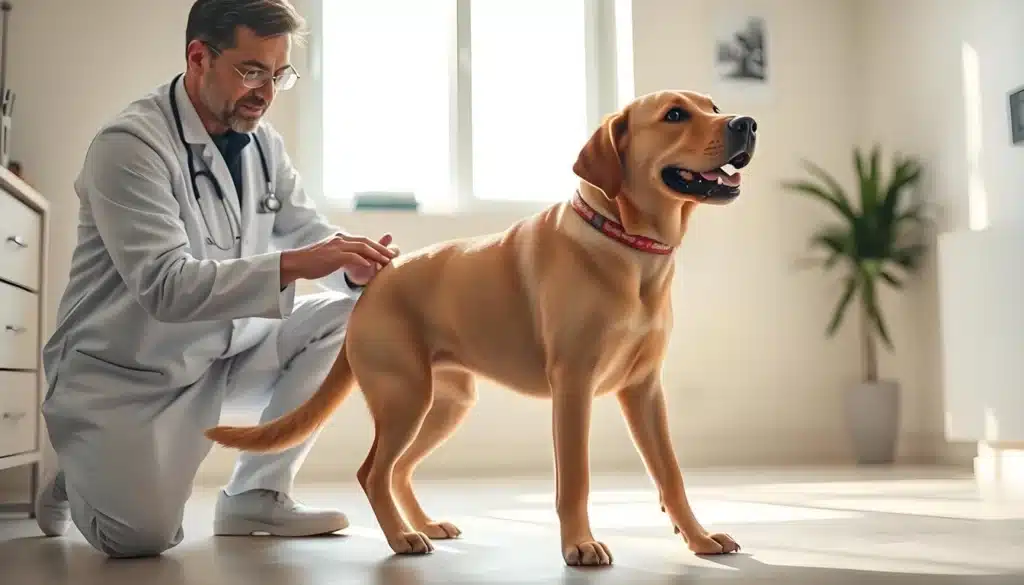
Setting Up Your Dog Agility Training Space
Creating a good training area for your dog is key to success in agility training. Training at home makes practice easy and strengthens your bond. Even a small space can become a fun training area with the right setup.
Choosing the Right Equipment for Home Training
Choosing the right agility equipment is important. Look for durable, safe options that fit your space. Basic items include:
- Jumps: Essential for building jumping skills and technique.
- Tunnels: Great for improving speed and confidence.
- Weave poles: Excellent for enhancing agility and precision.
While professional gear can be pricey, many brands offer affordable quality options. Choose based on your dog's size and skill level for a great training experience.
Utilizing Everyday Items for Agility Exercises
Home training can use more than just agility gear. Everyday items can be creative solutions for exercises. Here are some ideas:
- Chairs: Use them to create narrow pathways that your dog can weave through.
- Boxes: Stack them to create obstacles for jumping or balancing.
- Hula hoops: Encourage your dog to jump through them as a fun challenge.
Using these items, I can make a fun agility space without spending a lot. It's all about being creative and adapting, making sure my dog has fun and varied training.
Training Techniques for Dog Agility
Understanding different training techniques is key in dog agility training. It helps improve the bond between handler and dog. It also makes learning fun and positive. Positive reinforcement is especially important. It encourages good behavior and rewards it.
Building dog confidence is also crucial. It lets dogs face obstacles with ease and security. This is done by gradually introducing challenges.
Positive Reinforcement in Training
Positive reinforcement is a core technique in dog agility training. It rewards dogs for good actions, like completing obstacles or following commands. Using treats, praise, or playtime helps dogs associate these actions with positive outcomes.
This method keeps training sessions exciting and motivating. It makes dogs eager to learn and perform well.
Building Confidence Through Gradual Challenges
To boost dog confidence, I start with simple obstacles. This makes them feel safe as they learn. As they get more confident, I add harder challenges.
This gradual approach helps build trust and confidence. It lets my dog grow and develop their skills in a supportive environment.
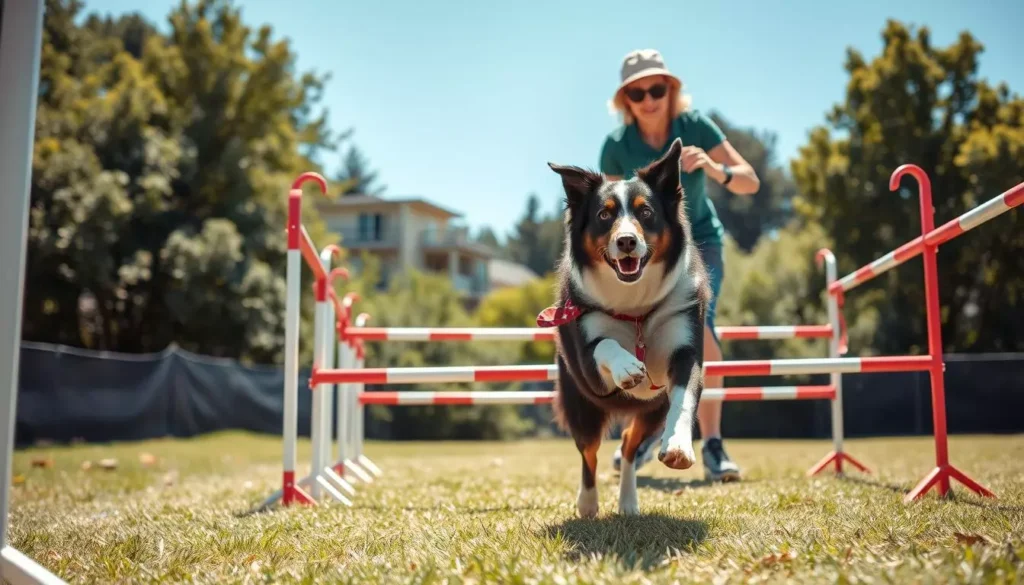
| Technique | Description | Benefits |
|---|---|---|
| Positive Reinforcement | Using rewards to encourage desired behaviors | Improves motivation and strengthens bond |
| Gradual Challenges | Introducing obstacles step by step | Builds confidence and trust |
| Consistency in Training | Maintaining a regular training schedule | Enhances learning and behavioral retention |
| Socialization | Exposing the dog to various environments and dogs | Improves adaptability and reduces anxiety |
Agility Dog Walk Plans and Exercises
Creating a good agility dog walk plan means adding different obstacles. These obstacles help your dog get better and feel more confident. I find that jumps, tunnels, and weave poles are great. They make training fun and keep your dog interested.
These activities work for dogs at any level. They're perfect for anyone who loves agility training.
Essential Obstacles for Agility Training
Here are some key obstacles I recommend:
- Jumps: Single and double jumps boost your dog's jumping and focus.
- Tunnels: Tunnels help your dog feel more confident and speed up as they get used to them.
- Weave Poles: Weaving through poles improves your dog's turning and agility.
- Contact Zones: A-frames and see-saws help your dog climb and balance better.
Adding these obstacles to your training plan makes it well-rounded.
Creating a Training Schedule and Routine
Having a good training schedule for agility is key. I suggest setting up your training like this:
| Day | Activity | Duration |
|---|---|---|
| Monday | Jumps and Tunnels | 30 minutes |
| Wednesday | Weave Poles Practice | 30 minutes |
| Friday | Contact Zone Training | 30 minutes |
This schedule lets your dog slowly get used to the obstacles. It makes sure each session builds on the last. A consistent agility dog walk plan keeps your dog focused and ready for new challenges.
Health and Safety Precautions in Dog Agility Training
Dog agility training requires a focus on health and safety. Keeping my dog safe and healthy is my main goal. A few key steps can make a big difference.
It's important to watch for signs of fatigue in my dog. I need to look out for signs like too much panting or lagging. If my dog seems tired, it's time for a break.
Regular vet visits are crucial for my dog's health. Before starting intense training, I check with my vet. This ensures my dog is ready for the activities.
What my dog eats affects their performance and recovery. I feed them high-quality food that meets their needs. This helps them stay strong and recover faster.
Using the right equipment is also key to safety. I choose well-made harnesses and collars. Old or poorly fitting gear can cause accidents.
In short, keeping my dog safe in agility training means watching for fatigue, regular vet visits, a good diet, and proper gear. These steps help my dog have a safe and successful training experience.
Preparing for Agility Competitions
Getting ready for dog agility competitions needs a clear plan. I make sure to practice consistently, trying to mimic real competition settings. This means training in different places to face new challenges.
Adapting my dog's training to include various obstacles and distractions is key. Training in different spots helps my dog get used to the excitement and surprises of competitions. Building my dog's toughness is also important to handle any stress during events.
Competition training tips stress the value of getting my dog familiar with the competition layout. If we can, we visit the venue early to walk the course together. This makes the actual day less scary.
Every training session is a chance to strengthen commands and boost my dog's confidence. I remember that preparing for dog agility competitions is a long journey. It takes patience, dedication, and a positive attitude.
Conclusion
As we wrap up this dog agility training recap, let's reflect on our journey. Committing to agility training boosts your dog's skills and strengthens your bond. It's not just about physical skills; it also builds confidence and social skills.
In my final thoughts, I urge you to enjoy the journey. Celebrate every small win. From learning basic commands to tackling obstacle courses, each step improves your dog's abilities. Agility is about the fun you share, not just winning.
So, get excited and bring your furry friend along. Whether you're aiming for competitions or just want to have fun, you'll both benefit. Happy training!

